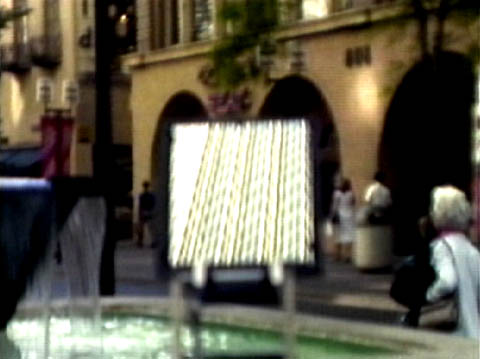[metaslider id=1830]
April 9th, 2014
@ Alamo Drafthouse at the Ritz (map)
7:50pm
$10 / ERC Pass (Buy Tickets Here)
A collection of works describing, investigating, expanding, detonating the dream machine. An essential Hollis Frampton performance, a recently restored 16mm double projection by Paul Sharits, an expansive video by Steina Vasulka, and Tony Conrad’s legendary THE FLICKER. Four artists – each associated with Buffalo’s pioneering Media Study department – take up the essentials of the moving image. Programmed by Ekrem Serdar. Heather Pesanti, senior curator of The Contemporary Austin, will introduce the screening.
WARNING: THIS SCREENING INCLUDES WORKS WITH FLICKERING LIGHTS THAT ARE POTENTIALLY HAZARDOUS FOR PHOTOGENIC EPILEPTICS OR PHOTOGENIC MIGRAINE SUFFERERS. ATTEND AT YOUR OWN RISK.
The Contemporary Austin reflects the spectrum of contemporary art through exhibitions, commissions, education, and the collection.
![]()
This project is funded and supported in part by the City of Austin through the Economic Growth & Redevelopment Services Office/Cultural Arts Division believing an investment in the Arts is an investment in Austin’s future.Visit Austin at NowPlayingAustin.com.
Program
A Lecture by Hollis Frampton
16mm performance / sound / 1968
Originally presented at Hunter College in 1968, A Lecture is an essential performance / text in understanding not only Frampton’s own work, but moving images as a whole. It is composed of a running projector, a prerecorded playback of the text, a red gel, and a pipe cleaner. For the original performance, a recording of the text by Michael Snow was played while Frampton operated the projector. For this performance, Ekrem Serdar will operate the projector, while a recording of the text by Rachel Stuckey will accompany it. You can read the text in full here.
“It is only a rectangle of white light. But it is all films.” – HF
Shutter Interface by Paul Sharits
24 min / 16mm double projection / sound / 1975
Originally conceived as a four projector installation, Sharits also made a two-projector version of Shutter Interface (as he did for a number of his multi-projector installations) for theatrical exhibition. We will be screening the recently restored two-projector version. You can view a clip of the four-projector installation version here; the Greene Naftali Gallery exhibition of both “Shutter Interface” and his works on paper was nominated for “Solo Exhibition of the Year” at the 2009 First Annual Art Awards at the NYC Guggenheim Museum.
“The central idea was to create a metaphor of the basic intermittency mechanism of the cinema: the shutter. If one slows down a projector, one observes a ‘flicker.’ This flickering reveals the rotating shutter activity of the system. Instead of slowing down a projector, one can metaphorically suggest the frame-by-frame structure of film (which is what necessitates a shutter blade mechanism) by differentiationg each frame of the film by radical shifts in value or hue; this metaphor was a guiding principle in my work in the 1960s, in my so-called ‘color flicker films.’ I discovered, two years ago, that I could heighten this metaphor by partiall overlapping two screens of related but different ‘flicker footage’ and the conception of four overlapping screens began to evolve. For installation pieces, I prefer to use long film loops, each a slightly different length, so that the relationships within the system go through many phases, making the piece seem to be beyond duration, to exist as on-going environments of visual aural activity (I regard them as ‘locations’).” – Excerpt from “Filmography”, previously published in: Film Culture – Paul Sharits, no. 65-66, New York, 1978, pp. 115-124
Urban Episodes by Steina
9 min / betasp / sound / 1980
Shot in downtown Minneapolis in 1980, Urban Episodes is part of the Machine Vision series, Steina’s ongoing investigation of the intersection of mechanical systems and the electronic image. Ordinarily, the camera view is associated with the human viewpoint, paying attention to the human condition which surrounds it. In this series, by constructing rotating devices with cameras, prisms, and mirrors, Steina redefines that idea of space, situating the camera as part of a larger machine, controlled by the mechanized decision making of instruments. The movements and gaze of the camera are directed toward its own non-human, mechanical viewpoints.
The Flicker by Tony Conrad
30 min / 16mm / sound / 1966
This is a notorious film; it moves audiences into some space and time in which they may look around and find the movie happening in the room there with them. Much has been written about THE FLICKER. It is a library of peculiar visual materials, referenced to the frame-pulse at 24 frames per second. All flickering light is potentially hazardous for photogenic epileptics or photogenic migraine sufferers. – TC
